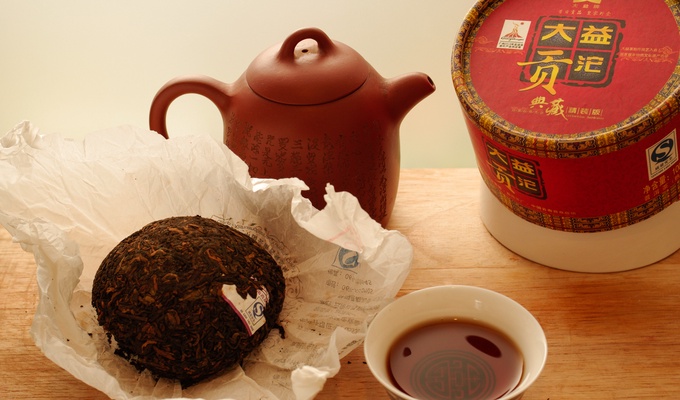Pu'er or pu-erh is a variety of fermented tea traditionally produced in Yunnan Province, China. In the context of traditional Chinese tea production terminology, fermentation refers to microbial fermentation, and is typically applied after the tea leaves have been sufficiently dried and rolled. As the tea undergoes controlled microbial fermentation, it also continues to oxidize, which is also controlled, until the desired flavors are reached. This process produces tea known as 黑茶 hēichá . Pu'er falls under a larger category of fermented teas commonly translated as dark teas.
Two main styles of pu'er production exist: a traditional, longer production process known as shēng (raw) pu'er; and a modern, accelerated production process known as shóu (ripe) pu'er. Pu'er traditionally begins with a raw product called "rough" (máo) chá (毛茶, lit. fuzzy/furry tea) and can be sold in this form or pressed into a number of shapes and sold as "shēng chá (生茶, lit. raw tea). Both of these forms then undergo the complex process of gradual fermentation and maturation with time. The wòduī (渥堆) fermentation process developed in 1973 by the Kunming Tea Factory created a new type of pu'er tea. This process involves an accelerated fermentation into shóu (or shú) chá (熟茶, lit. ripe tea) that is then stored loose or pressed into various shapes. The fermentation process was adopted at the Menghai Tea Factory shortly after and technically developed there. The legitimacy of shóu chá is disputed by some traditionalists when compared to the traditionally, longer-aged teas, such as shēng chá.
Pu’er can be stored and permitted to age and to mature, like wine, in non-airtight containers before consumption. This is why it has long been standard practice to label all types of pu’er with the year and region of production.
